#XBR-48A9G
Text
Sony TVs 2020 lineup at CES 2020 Review

As usual, the January CES in Las Vegas gathered a large number of experts. Traditionally, high-tech TVs have been the focus of attention. This year AI 8K upscaling in the Samsung Q950TS 8K and LG 8K TVs, bezel-less Infinity Design of Q950TS with a screen-to-body ratio of nearly 99% and super-thin LG Wallpaper series with a thickness under 4mm, improved game modes, sound control technologies, and adaptive options became the major innovative directions.
Of course, Sony also did not stand aside, introducing the new 8K LCD Z8H and 4K OLED A8H Master Series models.
As known, last year the company introduced the Master Series Z9G 8K, including 85-inch Sony XBR-85Z9G (KD-85ZG9) worth about $ 13,000 and the huge 98-inch XBR-98Z9G (KD-98ZG9) with a astronomical price of $ 70,000. However, today the cost of the Sony XBR-85Z9G has dropped to $ 10,000. In these models, the company used the new improved X1 Ultimate Proccesor together with the new 8K X-Reality PRO software technology.
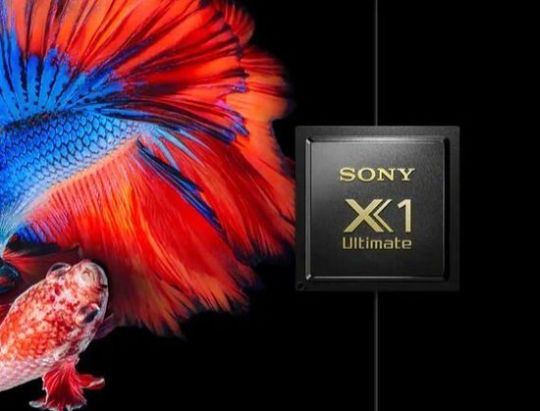
High 8K upscaling efficiency allowed the company to use them in new models of this year. As known, Sony upscaling algorithms use dual database processing. The first database recognizes compression noise, compares it with the reference image and eliminates artifacts. The second database increases resolution based on reference images.
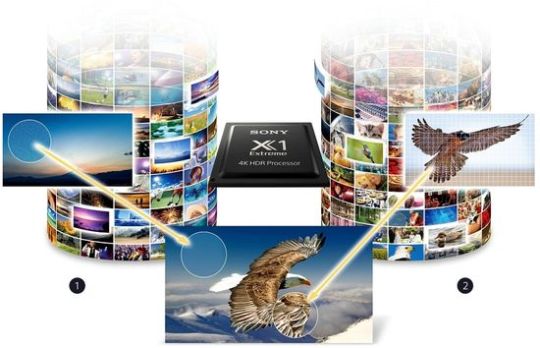
Design
8K LCD Z8H with an elegant silver rim looks very stylish.

The company named this unusual design an Immersive Edge concept. According to the designers, this design increases the immersion level and at the same time expand the functionality of the stand.
The name emphasizes the idea of enhancing immersion through an edge-oriented aesthetic. The minimalistic design with an ultra-narrow frame and an almost imperceptible stand minimize the visualization of the TV when watching. Together with Sound-from-Picture Reality, these two factors significantly raise the level of immersion.
As known, the company originally developed Acoustic Surface Audio for OLED models. Then based on it, Sony implemented Acoustic Multi-Audio in the ZG9 series. The technology uses four front-facing speakers, including two below the screen and two above it. This scheme effectively forms a surround sound. The company called this effect Sound-from-Picture Reality.
The adjustable legs radically simplified the installation of the TV. They can move from the edges of the screen to the center.
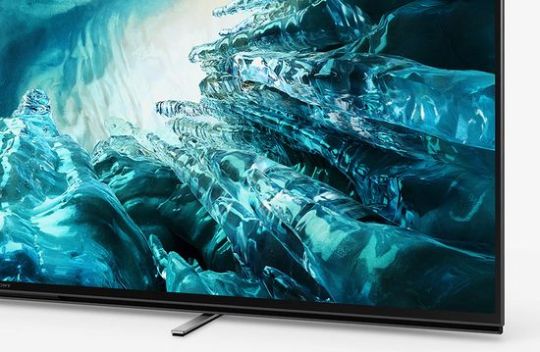
Moreover, the legs can rotate 90 degrees, providing a low-profile installation with virtually no clearance.

Unfortunately, the main competitors do not offer a similar option.
The 4K OLED A8H uses the One Slate design. It also has legs with adjustable height.

The choice of leg height varies up to 5-7 cm. This adjustment is very convenient, for example, when installing a TV in conjunction with a sound bar.
Ambient Optimization
The Sony Ambient Optimization feature fits perfectly into the overall trend of increasing the adaptability level of modern TVs. The company introduced it as “a new technology that optimises picture and sound quality in any customer environment.” For this purpose, the Samsung Q950TS 8K uses the Adaptive Picture function, and LG - new Dolby Vision IQ. The Ambient Optimization function automatically optimizes image parameters depending on the ambient light conditions.
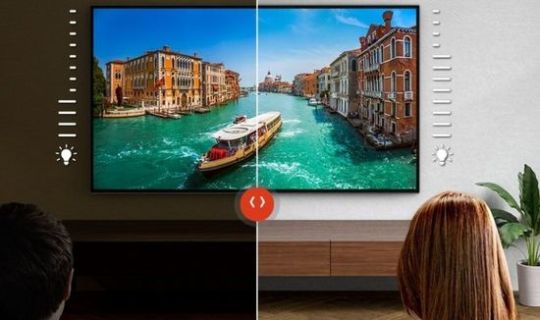
Of course, the work of Ambient Optimization is much more complicated than simply brightness increasing or decreasing in a dark or light room. In fact, it provides automatic adjustment of color gamma in the local areas of the screen. For example, for a bright room, the TV increases the brightness of the details in the shadows to improve their visibility. But at the same time, it does not change the brightness in bright areas of the frame to prevent glare. Moreover, the system increases the saturation of colors to eliminate the matting effect due to ambient light. Theoretically, Ambient Optimization will be especially effective for the HDR format.
Moreover, this technology detects surrounding objects, including curtains or furniture, and calibrates the acoustics settings to compensate for their effects on the propagation of sound waves.
X-Motion Clarity technology, Frame Tweeter and other
As known, modern TVs use the BFI function (Black Frame Insertion), which briefly turns off the backlight. Visually, this process is equivalent to a twofold increase in frame rate, which reduces blur in highly dynamic scenes. Unfortunately, BFI simultaneously reduces brightness. To solve this problem, Sony developed X-Motion Clarity technology, which replaced the previous Motionflow XR. In fact, X-Motion Clarity controls the transitions between frames, providing consistent brightness at high clarity and smoothness.
Initially, X-Motion Clarity Technology was developed for LCD televisions with FALD (full array local dimming). Today, the company has successfully adapted this technology for OLED models.
The Z8H series uses innovative Frame Tweeter technology, which transfers sound vibrations to the TV frame, turning it into a sound source.
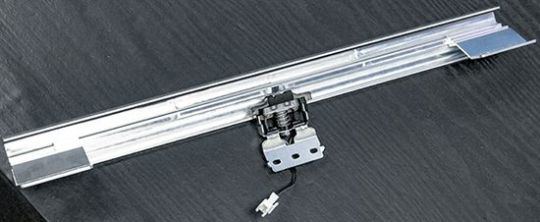
In addition, new TVs support Netflix Calibrated Mode, IMAX Enhanced, Dolby Atmos and Sony’s Acoustic Surface Audio+ with a subwoofer behind the screen and two actuators to vibrate the display.

Unfortunately, unlike the Sony 8K Z8H, the A8H does not have HDMI 2.1.
Key Features
BRAVIA 8K HDR Z8H series
It includes 75- and 85-inch TVs with Full Array LED backlight.
Key Features:
- ultra-high contrast with 8K resolution;
- HDMI 2.1;
- peak brightness exceeds 1000 nits;
- X1Ultimate processor with 8K X-RealityPRO technology (8K upscaling);
- Frame Tweeter + Sound-from-Picture Reality;
- adjustable stand;
- HDR10, Dolby Vision and HLG support;
- Ambient Optimization;
- compatible with Dolby Vision and Dolby Atmos;
- voice control;
- support for Apple AirPlay 2, HomeKit and Amazon Alexa;
- Android 9 Pie;
- support for 4K @ 120fps.
4K HDR OLED A8H series
It includes 55- and 65-inch XBR55A8H and XBR65A8H TVs
Key Features:
- X1Ultimate processor;
- Pixel Contrast Booster;
- X-Motion Clarity;
- Acoustic Surface Audio + two subwoofers;
- Ambient Optimization;
- compatible with Dolby Vision and Dolby Atmos;
- support for Apple AirPlay 2, HomeKit and Amazon Alexa;
- Android 9 Pie.
In addition, the company expanded last year’s super-popular A9G series with the addition of a 48-inch XBR-48A9G. As known, LG this year also offered a 48-inch LG OLED48CXPUA. Apparently, the main manufacturers of OLED TVs are planning to expand their lineup with low-cost models with a relatively small screen. Of course, many consumers will welcome the new offer.
Conclusion
Once again, the company fully met the expectations of Sony fans. In fact, the Sony 2020 lineup contains a complete list of current TVs, including LCD and OLED models with 4K and 8K resolution. In addition, the company demonstrated its commitment to the innovation trend by introducing new Ambient Optimization mode, X-Motion Clarity for OLED, and promising Frame Tweeter technology.
Of course, Samsung, LG and other leaders in this segment also presented a large number of interesting innovative models. But the results of their competition will depend on the pricing policy of companies, which will be determined in the next few months.
Video demonstrates Sony BRAVIA Z8H series at CES 2020.
Read the full article
#AcousticMulti-Audio#AcousticSurfaceAudio#AmbientOptimization#FrameTweeter#ImmersiveEdgedesign#OneSlatedesign#SonyKD-75ZH8#SonyKD-85ZH8#SonyTVs2020#SonyXBR75Z8H#SonyXBR85Z8H#SonyXBR55A8H#SonyXBR65A8H#Sound-from-PictureReality#XBR-48A9G
0 notes
Text
TCL TVs 2020 lineup at CES 2020 Review

Perhaps the unprecedentedly rapid growth in popularity of TCL TVs came as a surprise to many market participants. As known, the Chinese TCL (Telephone Communication Limited) was originally engaged in the production of audio cassettes and was called TTK Home Appliances Limited Company. Its heyday began after the acquisition of the Thomson TV and Alcatel brands in 2004. In 2014, the company introduced the first TCL TV with Quantum Dot display technology.
The company invested about $ 7 billion in the production of LCD and OLED displays in 2016. In the fall of 2017, the company introduced the new TCL P6 Popular TV series at the Import and Export Fair. The high innovative level, aggressive pricing policy and high quality ensured it a huge popularity. But the company didn’t rest on its laurels. A year later, it introduced an even more successful TCL 6-Series Roku TV, including 55- and 65-inch TCL R617 and R615.

A few years ago, TCL TVs successfully competed in the mid-budget segment, offering great models for several hundred dollars. Many of them have been consistently included in the BestSellers list for several years. The TCL 6-Series Roku TV belongs to the top of this price segment. Today, the cost of 55-inch model varies around $ 500. In 2019, many experts included it the top list of the most popular 4K HDR Smart LED TVs.
Moreover, at CES 2019, the company introduced TCL 8-Series Roku TV, including the TCL 65Q825 Roku and 75Q825 with the most innovative Mini-LED backlight technology.

OLED and MicroLED TVs
CES 2020 showed fierce competition between main TV display technologies, including LED, OLED и MicroLED. Prospective MicroLED technology is away from the battle, as Samsung reigns supreme in this segment. At CES 2020, the company convincingly demonstrated its successes in this direction by presenting 88- and 150-inch bezel-less MicroLED TVs.

OLED manufacturers increase competitiveness mainly by lowering prices. For example, in 2018 LG introduced a great 4K HDR Smart OLED B8 PLA at a price of just over $ 2,000.
Reducing the diagonal size of OLED models is also becoming a trend. At CES 2020, LG showed 48-inch OLED48CXPUA of CX Series with Nvidia G-Sync built-in, and Sony - 48-inch XBR-48A9G. Of course, consumers are happy to welcome such trends.
In addition, companies also showcase huge OLED models with great image. But their cost is tens of thousands of dollars, and they do not claim to be in the list of BestSellers. Such TVs mainly demonstrate the technological power of the company and the main development trends.
LED TVs
But the situation in the LED TVs segment is significantly different. Today, companies have developed several versions of Quantum Dot LED technology, including QLED (Samsung), NanoCell (LG), Triluminos (Sony), and ULED (Hisense). All of them are based on the use of an additional matrix with inorganic crystals, which improves color accuracy and extends the color gamut.

The low cost of producing this film using lithography and high efficiency allowed companies to significantly improve image quality at a relatively low price.
But this was not enough for a successful competition with OLED technology, which provides infinite contrast due to perfect black. As known, OLED matrices use self-emitting organic diodes that do not require backlight. Accordingly, the absence of a control signal from the transistor provides absolutely black at the screen. Unfortunately, LCD panels with LED backlight cannot ensure its complete blocking to display black.
In a result, the developers of Quantum Dot LED technology in recent years have been actively improving backlight by upgrading Direct LED backlight to FALD (full-array local dimming). As the name implies, Local Dimming technology provides backlight control for individual groups of pixels. In fact, it turns off the necessary LEDs in the backlight, increasing the black level in the corresponding part of the screen and, accordingly, increasing the image contrast.

Probably, further improvement of Quantum Dot LED and Local Dimming technologies will be able to raise the image quality to the level of modern OLED TVs. But probably, by this time their cost will be equal.
Contrast Control Zones
Ideally, the number of dimming zones should correspond to the number of pixels. In other words, the control system must control each backlight LED for each pixel. Then the display will provide maximum contrast, displaying the dark parts of the image without gray gradations. In this case, LED and OLED TVs will provide the same contrast. But, of course, no one poses such an unrealistic task, given more than 33 million pixels on an 8K panel. Nevertheless, increasing the number of dimming zones is one of the main directions for improving the backlight.
Unexpectedly for many, the Chinese company was ahead of many famous competitors by developing LED backlight technology with Contrast Control Zones. This proprietary technology has expanded the number of zones from 72 to 96 for the 55-inch size and up to 120 zones for the 65-inch version in TCL 6-Series Roku TVs. As a result, TCL 6th series were able to provide excellent image quality, becoming one of the most popular TVs in the price segment up to $ 1,000.
Quantum Contrast
But the company did not stop there. In 2019, TCL introduced TCL 8-Series Roku TV with mini-LED Quantum Contrast backlight technology.

Engineers were able to place over 25,000 mini-LEDs into the backlight panel, which are grouped into around 1,000 dimming zones.

For comparison, the 75-inch Vizio Quantum X uses only 485 local dimming zones, and the Sony XBR-85Z9G 8K TV costing about $ 10,000 has 720 zones.
In fact, Quantum Contrast is based on the use of mini-LEDs measuring up to 200 microns (0.01 inches). But the size of conventional LEDs varies around 1000 microns (0.04 inches).

Of course, a significant reduction in the size of LEDs allowed engineers to significantly increase their number, drastically increasing the number of backlight zones.
At the end of December, the TCL 8 Series was already available. Today, it includes 4K HDR 65-inch 65Q825 and the 75-inch 75Q825 priced at $ 1,600 and $ 2,600 respectively, which is $ 400 less than the announced price. With the same image quality, the TCL 65Q825 is about $ 100 more expensive than one of 2019's most popular LG's B9 OLED TV. But the 75Q825 is significantly more expensive than the QLED Vizio P-Series Quantum X at a similar level. Nevertheless, TCL 8th series TVs confidently entered the lower segment of the top TVs, where they successfully compete with the most popular models. Unfortunately, this series so far does not include 8K models.
Mini-LEDs backlight and Vidrian Mini LED technology
At first glance, the development of Vidrian Mini-LED technology seems redundant, because if successful, it will virtually make Quantum Contrast backlight unnecessary. But this aspect may have nuances.
Unfortunately, Mini-LEDs have less brightness. But a simple increase in voltage dramatically increases heating and reduces their longevity. It is likely that implementation of Quantum Contrast in the 8th series was quite difficult and expensive. In this case, the announcement of the newest next-generation Vidrian "Glass on LED” Mini-LED technology was very timely.

It will use the driving semi-conductor circuitry and tens of thousands of mini-LEDs directly infused in a crystal-clear glass substrate. Preliminary, the company plans to use this technology in the next generation of the super-popular 6th series. According to preliminary information, TCL Vidrian 8K Mini LED TV will be able to provide 5184 dimming zones.
This technology eliminates the problem of overheating the mini-LEDs, allowing engineers to increase the voltage and, accordingly, the backlight brightness.
In fact, Vidrian panels will become the resus for the further improvement of mini-LED Quantum Contrast backlight technology, leaving the company the possibility of maneuver. In any case, the consumer market can only welcome the energetic innovation of the company.
TCL TVs at CES 2020
At CES, TCL announced its 2020 TVs line-up. It includes the flagship QLED 8K X915 and 4K TCL QLED C815 & C715 Cityline series. The 8K X915 contains 85-, 75- and 65-inch models, uses 8k Upscaling, Quantum Dot Display and Local Dimming technologies, supports HDR Dolby Vision, Dolby Atmos, IMAX Enhanced, Far-field Voice Control, has Onkyo Audio System and Latest Android OS.

Moreover, the X9 also has a retractable built-in webcam, ascending and descending automatically when prompted. As known, Samsung was the first to offer this option in its models and it turned out to be very popular among consumers.
The 4K Quantum Dot C815 and C715 also support Dolby Vision, Dolby Atmos, HDR 10+, Far-field Voice Control and Latest Android OS.

The C815 includes 75-, 65-, and 55-inch models, and the C715 has 65-, 55-, and 50-inch TVs. All models have shown excellent brightness, contrast, and color gamut. But TVs showed carefully selected content. A more objective assessment of image quality for complex content is not yet possible.
Unfortunately, the company has abandoned an aggressive pricing strategy in recent years. Probably, some still remember the 4 and 5 series for the price of several hundred dollars. For example, the 55-inch TCL 55S425 4K Roku TV costs $ 280 today. Of course, many of them deservedly become BestSellers. But the price of 6 and 8 series is already consistent with their class.
Apparently, the flagships of 2020 will also not be cheap. But according to Michael Zhao, Senior Product Manager TCL USA, the new series will be more affordable than the X10 from last year. Unfortunately, today the company sells these TVs only on the Chinese market, promising to expand sales at the expense of Australia and Europe.
Conclusion
In general, the company fully met the expectations of fans of the TCL brand by introducing three series of competitive models and strengthening its position in the segment of top models. In addition, with German pedantry and perseverance, TCL continues to develop backlight, introducing a model with Mini-LEDs backlight and announcing the innovative Vidrian Mini LED technology. If Vidrian technology is successful, the company will be able to strengthen its dominance in this direction.
Moreover, all the flagships presented support a full range of modern technologies, including HDR Dolby Vision, Dolby Atmos, IMAX Enhanced, Far-field Voice Control, etc. Of course, the company will have to compete with Samsung, LG, Sony, etc, which also showed great TVs at CES 2020. But in any case, the consumer market will benefit from the emergence of a new participant in the group of leaders.
This video demonstrates the announcement of Vidrian mini LED on glass at CES 2020.
Read the full article
#ContrastControlZones#Far-fieldVoiceControl#IMAXEnhanced#LocalDimmingtechnology#Mini-LEDsbacklight#TCL55S4254KRokuTV#TCL65Q825#TCL75Q825#TCLQLED4KC715Citylineseries#TCLQLED4KC815Citylineseries#TCLQLED8KX915#TCLR615#TCLR617#TCLTVs2020lineup#VidrianminiLEDonglass#VidrianMiniLEDtechnology
0 notes